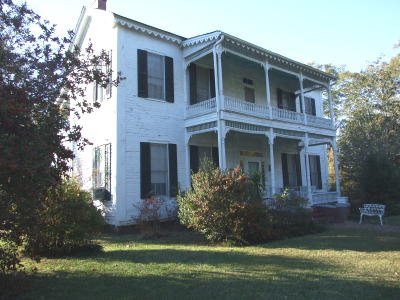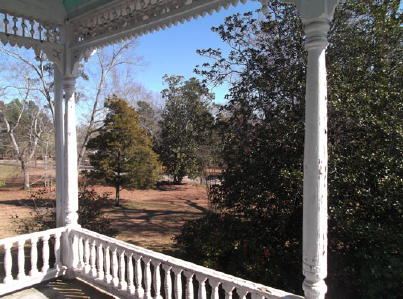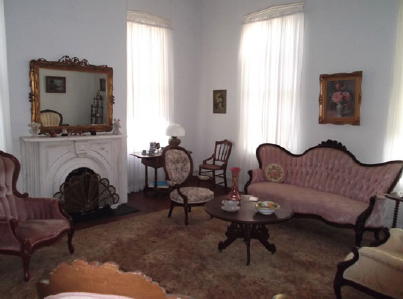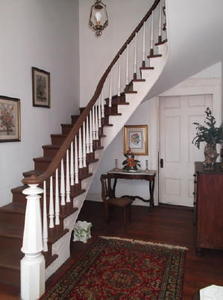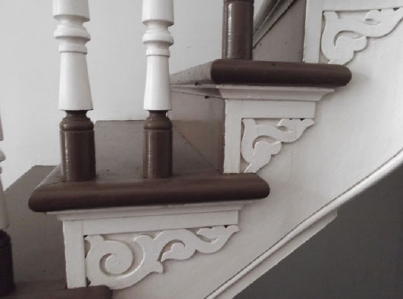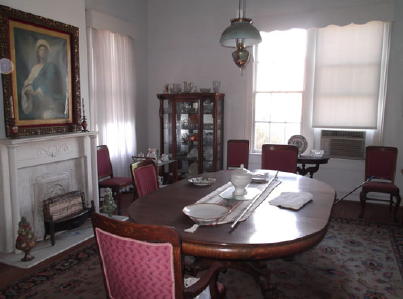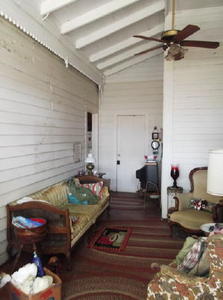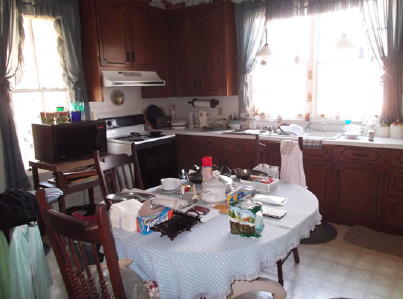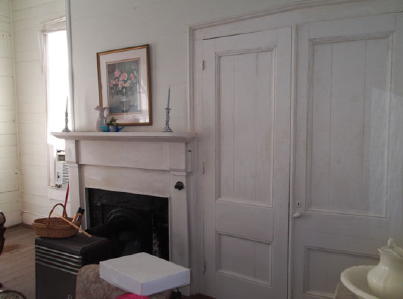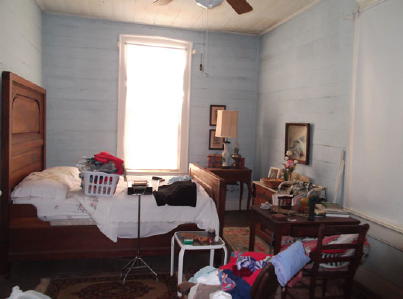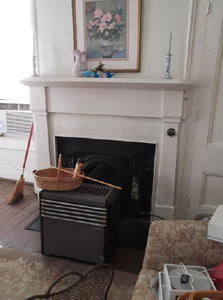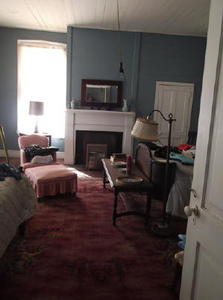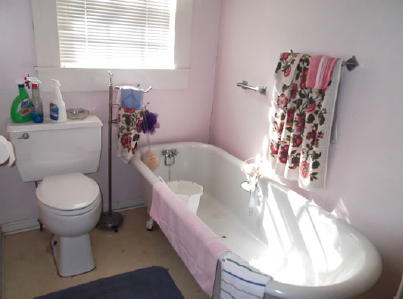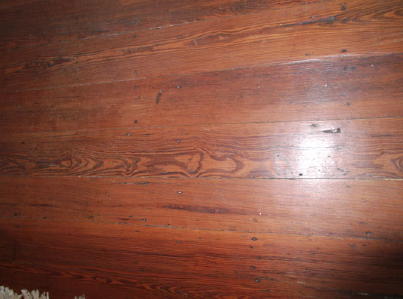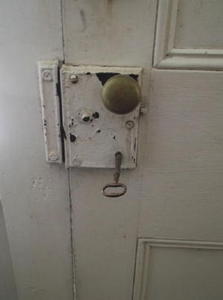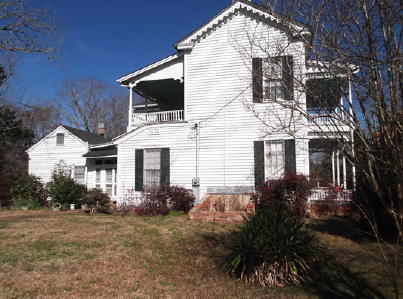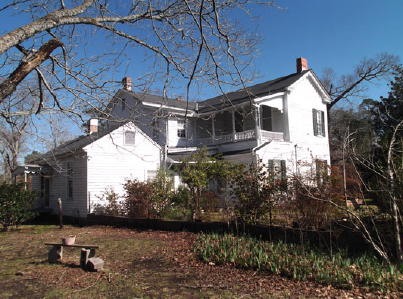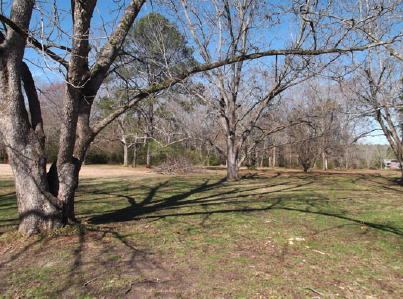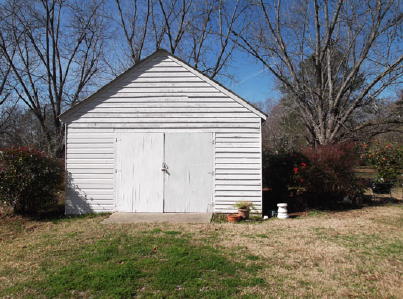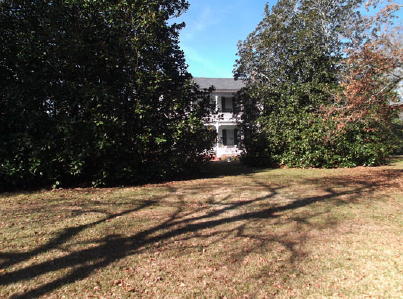Hwy 61, Newbern, Alabama 36765
$105,000



















Property Details
Property Description
The Howell House was built by John Morrisette before the Civil War, moved to its present site in 1887 and reconstructed by Francis S. Morrisette. This L shaped house is built of heart pine, has original mantles, ten foot ceilings, 5 bedrooms, 1 bath, outstanding spiral staircase in front hall, & back stair to porch which has been enclosed to make a sitting room. Located on 4.6 acres with lovely old pecan grove in the back. $105,000. Call Kay. History of Newbern, Alabama Newbern, though a small town, is very rich in history. W.E.W.Yerby, a Hale County historian, has recorded 1816 as the date of its first settlers. The region in the heart of the Black Belt- attracted settlers because of its rich soil. And so they came from Georgia, Tennessee, Kentucky and North and South Carolina. These early settlers lived in log houses with mostly log furniture. They made their living chiefly by raising cattle and grain. The profitable raising of cotton came with the widespread use of Eli Whitneys cotton gin. It is remarkable that some of the early, primitive cabins of the first settlers actually stood for a hundred years. Records that are truly acceptable of the early life of Newbern are, alas, few. One valuable source to us today is Dr. Jacob Huggins, who spent most of his life in Newbern and jotted down what he had heard as a schoolboy in search of historic facts about the town. Dr. Huggins said that the earliest settler was a Dr. Christopher, a planter, preacher and physician who came to this place in 1816 with his son-in-law, a Mr. Chiles. So Mr. Christopher was not only the first settler but also the first doctor, preacher and planter that the locality had. From that point in time there is a gap of more than a dozen years until the 1830s, when Seabrooks, Hardins, Whisitts, Ervins, Bordens, Hendons, Walthalls, Crooms and others (whose names are lost) appeared. The following are some facts from Dr. Huggins account of this period: In journeys to and fro the Indians left trails that cross Alabama in various directions. We are told that one of these ran through the site of Newbern. From Picketts history of Alabama we learn that De Soto fought against 8,000 Indian warriors at Old Erie in 1540. If this is true, the great Spanish explorer with his train of followers passed along the path to what became the Newbern schoolhouse. He may have rested after the battle with the Indians on the school lot. The site of this schoolhouse is thus of historic interest. Further, it is important for having been the first lot cleared within the present limits of the town of Newbern cleared by Dr. William Christopher in 1817. About 1818 Mr. Chiles built the first grist mill. In 1829, Messrs. Harvey Tyndall and Simpson Hemphill built the first store in the settlement; it was called by the people Grab-All, a name that reveals its character. Mr. F. A. Borden established the first post office in 1832. He also brought his brothers from North Carolina to this village and they laid out the town, cutting a wide road (now Main Street) through the center and selling lots. In 1835 Mr. Borden established a second post office and the town was named Newbern, after the largest city of his native state. For many years it was spelled as two words: New Bern. Were told that the first schoolhouse was built in the late 20s. Known as the Gum Springs schoolhouse, it had two young men as teachers. In 1842 a splendid new school building was erected. The principal was Rev. John Wright, a Presbyterian minister, and his wife had charge of music, teaching piano, harp and voice. The school had a very good reputation, with pupils from several surrounding towns attending it. Mr. F. W. Hawkes established an upper level female school called Castalin Institute, named for a school in Greece. In 1854 the town of Newbern was incorporated, with Mr. Hawkes being elected its first mayor. He opened a hotel known as the Saline Hotel, named for Newberns famous Saline Well. Many people from all over the United States and from abroad came to Newbern for the water in this well, making the town a kind of health resort. One who came was the great American orator William Yancey. The first railroad, built in 1859, ran from Newbern to Uniontown and was owned by a private corporation of citizens who lived in those two towns. Later the road bed was changed and ran from Newbern to Marion. Still later it was extended to Akron and became a part of the Southern Railroad. We have been told that the peaceful little town we know today was, in the early days, a pioneer settlement characterized by rowdyism and general roughness. There is an old tale told of a dream that a man once had in Newbern. He dreamed that as the devil was going over the world looking after his imps he eventually came towards Newbern. When he reached the top of the hill on the northern edge he looked toward the town and then turned away, saying There is no need of my going there my work is needing no attention. Aside from these notes recorded by Dr. Huggins, there is little available material concerning the early life of Newbern save what we find in the minutes of the churches. The churches were built as a direct assault on the then-rowdy little village, which was given to shooting and drinking sprees. With the passing of the frontier period of general roughness, the town turned to a more genteel and sedate way of life established and maintained by the churches. In listening to the history of the churches one realizes that they are so intertwined with the history of the town that the two can hardly be separated. The rosters of original members is a roster of the settlers of the town. The records of membership, baptism, marriage and death are true records of valuable statistics. This truth will become quite clear as you read the history of the three Newbern churches Presbyterian, Baptist and Methodist in the pages that follow. Of considerable interest in connection with all of the churches is the historic old church bell. Once a steamboat bell, it was given to a Mr. Evans by and old sea captain whose boat had been burned. Originally the bell was placed at the rear of the Presbyterian Church, but it was later moved to Main Street, south of the Methodist Church, where it is located at the present time. The date July 4, 1868 is molded in the bell, which has called all Newbern congregations to worship in the years since. It has also served as a fire bell for the town. At the time of this writing (1988) Newbern is recorded as having 310 inhabitants. Of the descendants of the earlier dwellers there are still in the town Hatches, Woodses, Walthalls and Trues. Robert L. Walthall is the mayor, and the town council consists of T. A. Walthall, Paul J. Owens, A. W. Bailey, Jr., A. L. Howell and Nora M. True. Edna Owens is the treasurer. The three old churches described in the following pages are all active, and the black inhabitants of Newbern have their own churches. The members of all congregations have worked and worshipped in the hands of Christian fellowship through the years, and Newbern remains today a lovely, happy and historic town in its little corner of Hale County.
Location
Hwy 61, Newbern, Alabama 36765
Interested In This Property?
Mortgage Calculator
Owning a home is a great investment and it is key to plan your mortgage payments ahead of time. Calculate for your monthly mortgage using our free calculator below.

